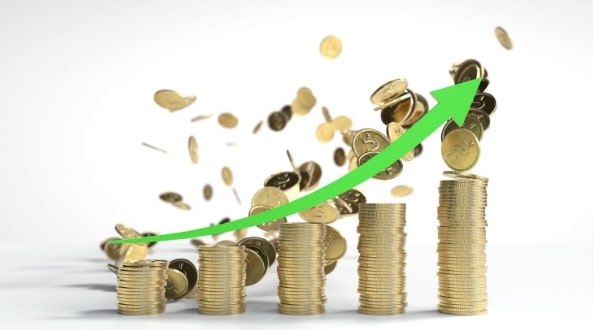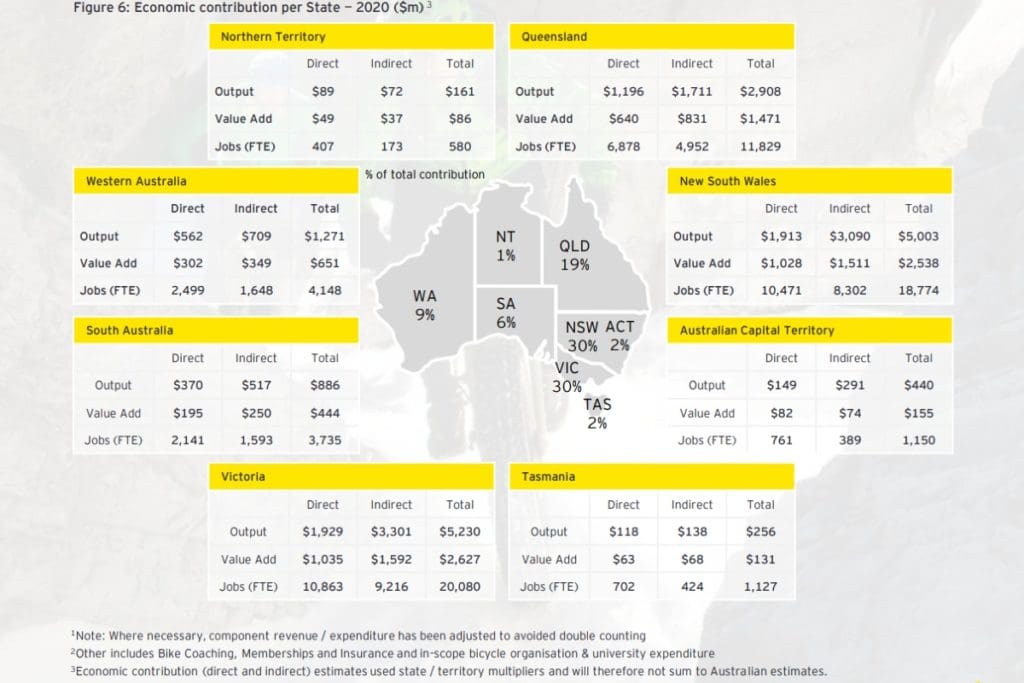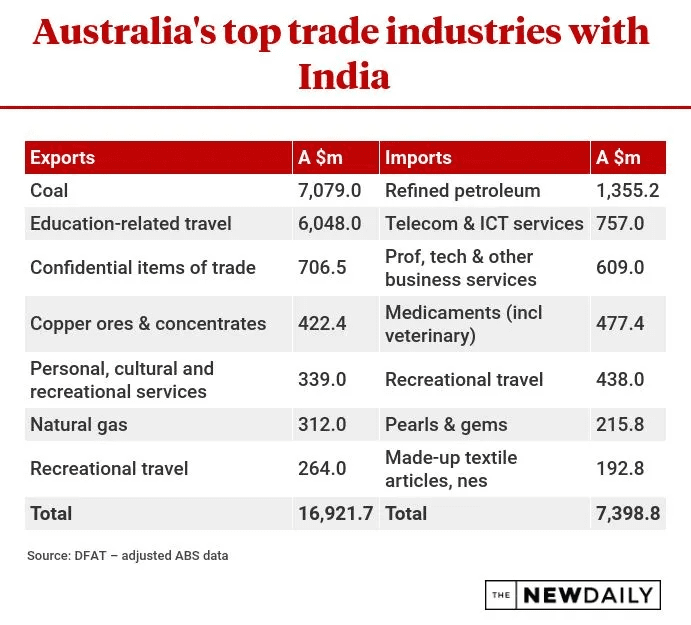The post How Tourists Make Australia RICH! Australia’s Economic Gamble! appeared first on TheAussieway.
]]>
Australia has a Western-style capitalist environment with one of the highest per capita GDP in the world, most of which is derived from the service sector. Interestingly, the mining sector and the agriculture sector also contribute a huge chunk to Australia’s GDP along with the tourism sector. Thanks to Australia’s lush hinterlands, sun-kissed beaches, and other cultural riches, it has attracted tourists from all over the world along with their riches. Let’s find out more about how the Australian economy works.
The Intricacies of the Australian Economy
Australia has a mixed economy which has experienced a massive boom since the economic liberalisation during the 1980s. Even though the economic giant experienced a fall in GDP and employment after the recession in the early 1990s and 2020, it bounced back quickly pertaining to its mining sector which evolved since the gold rush in 1840. However, it would be unfair to credit the mining sector solely for the economic stability of the nation. In fact, there are multiple pillars, including agriculture, manufacturing, service, tourism, and finance which have upheld the foundation of the Australian economy.

Mining Sector
Australia is one of the largest producers of gold, silver, and copper in the world and the largest producer of iron ore. It is also one of the largest producers of coal, bauxite, manganese, zinc, cobalt, uranium, nickel, and sulphur, making it one of the most mineral-rich nations. A vast revenue of the Australian economy is derived from the export of these minerals and metals.
Service Sector
Australia may not be the Silicon Valley but it is no less in terms of its IT services. A vast majority of the Australian population, especially in the urban areas and state capitals cities are engaged in service sectors which contributes to the major chunk of GDP in the country.
Manufacturing Sector
Even though Australia was one of the manufacturing giants during the 1960s with companies like Ford, Holden, Mitsubishi, and Toyota having their hubs in the country, the manufacturing GDP of the country has declined since then
Agricultural Sector
Australia has a lush tapestry of natural resources, ideal for agriculture and irrigation. Even the locals are spoiled with farm fresh produce. Fishing and forestry in Australia is also a booming industry which not only contributes to the nation’s GDP and provides employment but also earns huge sums of revenue from exports.
Tourism Sector
The tourism sector is one of the most important pillars of the Australian economy comprising domestic as well as international tourists. According to the World Tourism Organisation, Australia is the fortieth most visited country in the world. Even though the majority of the GDP comes from domestic tourism in Australia, the number of international tourists has also increased in the country, thereby strengthening its economy. Let’s find out more about the contribution of the tourism sector to the Australian economy.
The Role of Tourism in the Australian Economy

The importance of tourism in boosting the Australian economy is immense. It generates thousands of jobs across the country and aids in the development of the infrastructure of the country as well. When more and more tourists visit Australia and encourage the authorities to provide the tourist with best-in-class and safe facilities. This leads to new roads and highways, developed parks, improved public spaces, new airports, and possibly better schools and hospitals. Moreover, when tourists spend their money on accommodations, local food, and souvenirs, it also helps the local businesses grow.
Australia generated $60.8 billion in direct tourism gross domestic product (GDP) in the financial year 2018–19. It also made up 5% of the total workforce in the country in the same year by employing over 666,000 Australians. Before the pandemic hit in 2019, it was recorded that on an average, Australians travelled four times a year domestically. One in every eight businesses across the country was in the tourism businesses and one in twelve Australians were employed in the tourism sector in 2018-19. That’s not all folks! There was also a massive growth in the number of tourists from countries like India and China. No wonder the tourism sector attracted the riches. Unfortunately, something changed for the worse. The Covid 19 pandemic left the tourism sector gasping for air. But how has COVID affected tourism in Australia?
The Impact of Covid
After the Covid-19 pandemic hit, national and mostly international travel ground to a halt all across the globe including Australia. The tourism economy was heavily hit in 2020, with a total loss of almost $80 billion in tourism revenue in just one year. This served as a major wake-up call, reminding each and every one of us just how important the tourism sector is in the context of the global and national economy. The ripple effects were felt not only by tour operators and accommodation providers but also by small businesses in regional areas heavily reliant on tourism.
The Comeback of Tourism in 2022 and the Future Ahead
With the borders opening for tourism in 2022, the Australian economy heaved a sigh of relief and new hopes for the economy were reborn. Domestic tourism in the country has been able to rebound substantially, even though the numbers are significantly lower than in pre-pandemic times. However, total domestic tourism spending and the average spend per visitor have increased since March 2022, as compared to pre-pandemic times. International tourism has also picked up pace since 2022, but the number of outflow of International tourists has been greater than the number of inflow of tourists. The good news is that the tourism industry is likely to recover completely in just a few years, and tourism will continue to be one of the strongest pillars of a sustainable economy for Australia.
The post How Tourists Make Australia RICH! Australia’s Economic Gamble! appeared first on TheAussieway.
]]>The post Government’s September Initiatives: How It Is Helping Millions of Aussies Keep Up with the Cost of Living! appeared first on TheAussieway.
]]>
Cost of Living crisis:

Both citizens and policymakers are struggling with the rising cost of living Australia. The expenses have increased in areas like utilities, housing, and groceries. These basic necessities have become a concern for Australians, and many families are finding it challenging to pass through this difficult hurdle. The impact of the COVID-19 pandemic has made things worse and exacerbated this issue. Therefore, the government has to step in and take some supportive measures to help the people manage this phase.
What September Month Will Bring for Australians?

Image Credit: https://www.slideshare.net/slideshow/governments-september-initiatives-cost-of-living-australia/261103576
As the month of September arrives, these important government measures will help eliminate the cost of living strain. These September initiatives will cover a wide range of areas, including financial assistance, housing support, and more, that are poised to make a significant impact in the lives of countless Australians.
The key initiatives will be as follows:
- Financial Assistance: The government is going to offer direct support to Australians by giving them financial assistance. Assistance will be provided to eligible individuals and families so they can manage their daily expenses.
- Housing Support: Many Australians are going through a housing crisis, so the government will address their housing crisis and Adopt reforms. The government will implement the changes, including rent relief programs, and take initiatives to make housing budget options affordable.
- Education And Health: Initiatives related to education and healthcare costs will be worked upon. It will help the families manage their healthcare and education budgets in an appropriate way through government measures.
- Utilities and Bill Relief: Australians will get access to essential services like utilities and manage their utility bills precisely. Those undergoing financial hardship will have complete support through these schemes.
- Tax Relief: The government will offer tax rebates and tax breaks to ease the tax burden on lower and middle-class income earners.
When time is unpredictable, unprecedented Support is the need of the hour
These government initiatives reflect the commitment to assist those who are facing hardships and many other economic challenges to support themselves and their families. The government will offer relief to those who are struggling with the rising cost of living. The vast range of support measures offered by the Government highlights the comprehensive approach taken towards the complex issues faced by Australians.

Though these initiatives offer a ray of hope to millions of Australians, they also manifest the importance of timely government intervention during these unprecedented times. This holds great importance as the nation is facing economic challenges. This is a task of economic recovery where several measurements serve as a testament to the government’s dedication to the welfare of its citizens.
However, these steps taken by the government will not provide immediate relief to the citizens, but they will contribute to the overall economic stability and well-being of the people and families trying to fight the daily challenges every day. It will at least bring some relief to the people.
Final Words:
In these challenging times, the commitment of the government to support the cost of living is a beacon of hope for many Australians. As September begins, the government has promised a bright future to countless households across the country.
The post Government’s September Initiatives: How It Is Helping Millions of Aussies Keep Up with the Cost of Living! appeared first on TheAussieway.
]]>The post Cycling And Australia Economy appeared first on TheAussieway.
]]>
Cycling has been a major part of the Aussie Lifestyle and one of the few positive effects of the COVID epidemic as well. There has been a sharp rise in bicycle ridership. Over the past 18 months, a large number of Australians have resorted to cycling for both their fitness and social needs as gyms, swimming pools, and other health facilities have been frequently closed.
First off, cycling has produced employment possibilities in a number of sectors, including retail, maintenance, and bike manufacturing. According to the Australian Bureau of Statistics, the cycling business in Australia employs more than 20,000 people and brings in more than $2 billion annually. This sector also includes bike-sharing programs, which offer an affordable and environmentally friendly mode of transportation in urban areas and have generated new employment possibilities in the management and maintenance of bicycles.
We Ride Australia and Ernst & Young (EY) conducted a study to determine the economic impact of cycling in Australia in order to comprehend just how important cycling has grown to be there.
The study, which was published today, claims that Australia’s economy benefited from cycling to the tune of $6.3 billion in 2020. According to this statistic, “economic activity directly produced by bike riders, organisations, municipal and state governments provision of infrastructure to events, research, sport, and recreational cycling” is included.
The “direct value increase” of cycling to Australia’s GDP was calculated to be $3.4 billion. That is equivalent to the contribution made by the Australian thoroughbred business and more than three times what the country’s motorsport industry contributed.

The study, which was published today, claims that in 2020 cycling helped the Australian economy in the amount of $6.3 billion. This statistic takes into account that economic activity is directly produced by bicycle riders, organisations, and local and state governments’ supply of infrastructure to events, research, and sport and recreational cycling.
Meanwhile, it was calculated that cycling contributed $3.4 billion in “direct value increase” to Australia’s GDP. That is equal to or greater than the contribution made by the Australian business and more than three times the contribution made by the Australian motorsport industry.
Key findings are as follows:
- Governments invested more than $428 million in cycling-related initiatives and infrastructure.
- There were 60,330 direct and indirect jobs supported nationwide by a total of $16.8 billion in direct and indirect economic contributions.
- 5.8 million (29%) of adult Australians spent money on products and services linked to cycling.
- Australians rode at least once a week and spent money on it—3.3 million people.
- All cyclists who made purchases paid an average of $990 each.
- The bulk of buyers had annual household incomes between $50,000 and $150,000.
- Children’s bicycles made up 28% of all bicycle purchases.
- In 2020, 1.7 million bikes valued at $1.5 billion were bought.
- Cycle tourism contributed $1.168 billion to the immediate economic output.
- While 82% of those questioned said they rode their bikes for fitness and exercise, 41% said they rode their bikes for transportation, whether it be to work, school, or the store.
EY and We Ride point out that while the economic benefits of cycling were taken into account for their study, there are other benefits as well.

It is acknowledged that the physical activity benefits of cycling participation support wider health and well-being, and social and productivity benefits to the Australian economy, even though this research concentrates on the economic contribution of the industry. By easing traffic and offering a sustainable transportation choice, cycling as a method of transportation can also help local communities.
Australia’s rising popularity of cycling has given rise to new business possibilities for trip operators, bike rental businesses, and lodging facilities that are bike-friendly. These companies supply the increasing demand for bicycle tourism in Australia, which draws both domestic and foreign tourists. Australia’s natural grandeur is highlighted by cycling routes and trails, which also offer a distinctive and eco-friendly travel experience. In reality, it’s estimated that the Australian economy earns more than $1.2 billion a year from cycling tourism.
Furthermore, it has been demonstrated that cycling lowers healthcare costs by encouraging physical exercise and lowering the prevalence of chronic illnesses. Regular cycling can help people manage their weight, reduce stress, and improve their cardiovascular health, all of which can result in reduced healthcare costs for both the individual and the healthcare system. Cycling also encourages mental health and well-being, which is crucial in lowering the price of treating mental diseases.
Additionally, cycling is good for the environment and for everyone’s well-being. Cycling has a positive effect on public health because it reduces air pollution, carbon emissions, and traffic congestion. Cycling is a sustainable mode of transportation that lowers the carbon footprint of people and the economy as a whole. Lower air pollution has been related to lower rates of cancer and respiratory disease.
The growing interest in environmentally friendly transportation and the growing knowledge of cycling’s health advantages have both benefited the Australian cycling business. We can anticipate more economic benefits in the future as Australia’s cycling sector continues to expand. To guarantee the sustainability and expansion of the industry, it is crucial for the government and companies to keep funding cycling infrastructure and promotion.
Through the establishment of jobs, increased tourism, and better public health, cycling has grown to be a significant economic force in Australia. The bicycle industry in Australia is expanding, so it’s critical that companies and the government continue to fund infrastructure improvements and marketing campaigns for the sport. The advantages of cycling are obvious, and with continued funding, Australia can anticipate additional economic gains in the future.
The post Cycling And Australia Economy appeared first on TheAussieway.
]]>The post Can Australia’s Business Community Look To India As The Next “China”? appeared first on TheAussieway.
]]>There is every reason to expect that India will rank among Australia’s top trading partners if all goes according to plan. She has the potential to become Australia’s largest trading partner at this time, the “new China,” as it is known in some circles.
The declarations made by its federal ministers show how eager Australia is to provide its service and manufacturing sectors access to India’s enormous market.
According to ET, Australia, which is quickly becoming a significant partner of India in the Indo-Pacific region, wants to go beyond security and defence cooperation and is in negotiations with New Delhi to establish a trade partner to help the country’s mining industry and wine sales recover from a trade war with China.
Current Australia-India bilateral trade
| Trade ( US $ Billion) | Goods | Services | Total |
| India’s Exports to Australia | 6.9 | 3.6 | 10.5 |
| India’s Imports from Australia | 15.1 | 1.9 | 17.0 |
| Total | 22.0 | 5.5 | 27.5 |
| Deficit(-)/Surplus(+) | -8.2 | +1.7 | -6.5 |
India’s current 17th-largest trading partner is Australia, and Australia’s current 9th-largest trading partner is India. In 2021, bilateral commerce in goods between India and Australia in goods and services was worth US$ 27.5 billion. India’s exports of goods to Australia increased by 135% between 2019 and 2021. India exported goods of US$ 6.9 billion in 2021, the majority of which were completed goods.
In 2021, India imported commodities from Australia worth approximately $15.1 billion, primarily in the form of raw materials, minerals, and intermediate products. Coal makes up three-fourths of Australia’s total imports to India.
While India and Australia have a surplus in their service trade, their merchandise trade is in deficit, primarily because of coal imports.
Why is India not China?
By 2035, India will overtake China as the world’s most populated country and have the third-largest GDP.
The economies of India’s five major cities will be comparable to those of middle-income nations by 2035, and by 2025, one-fifth of the world’s population of working age will reside in India.
Australia’s population is currently 12 times larger than India’s aspirational middle class. All of these figures demonstrate the size of the Indian labour force and consumer market, while the number of people who will have access to the internet is expected to expand to over 850 million by 2030.
Given enormous figures, it is easy to become preoccupied with magnitude and overlook nuances. Even in sectors regarded as traditional strengths, like education and resources, India is still mostly unexplored territory for Australia. Currently, less than 4% of our global two-way commerce is conducted in products and services, with India, lagging far behind China, Japan, and South Korea. India was Australia’s eighth-largest trading partner in 2018–19, with a value of $30.3 billion in two-way goods and services trade. Comparatively, trade with China was worth $235 billion on both sides.
India must be understood on its own terms if we are to increase our trade and investment with it. According to the IES, India is the only nation with the scale to rival China, but it won’t overtake China. The markets of China and India are considerably distinct from one another and are governed by highly varied political, economic, and social systems.
When looking for prospects, it is worthwhile to investigate the high-growth segments of the Indian economy that complement Australian capabilities and characteristics.
India as a key strategic ally
With the challenges of fast urbanisation and infrastructure development, as well as the need to provide resources like clean water, digital connectivity, and health amenities for its expanding and ambitious population, India has emerged as an excellent strategic partner for Australia.
In some crucial areas, such as science, vaccines, pandemic management, space and defence, critical minerals and related technologies, water resources, training and education, the circular economy, waste-to-wealth processes, grain management and logistics, and cyber technologies, India and Australia have excellent prospects for cooperation.
Approximately $20 billion has already been invested by India and Australia into each other’s economies, which is already fueling their trade partnership. This year, bilateral commerce is expected to surpass $27 billion. However, efforts to make conducting business easier and the liberalisation of trade and services will significantly boost this momentum.
What Would an India Trade Agreement Mean for Australian Businesses?

According to experts, the agreement would increase Australia’s trade with India but not fully mitigate the negative impacts of its tense relations with China.
Amid rising diplomatic tensions between Canberra and Beijing, China imposed trade restrictions on more than $20 billion of Australian exports in 2019.
According to recent Treasury estimates, goods like coal, timber, and foods were impacted, costing the affected businesses $5.4 billion in only a single year.
Despite this, a Lowy Institute investigation shows a new trend in local businesses where they swiftly discovered replacement markets for China. India was crucial, especially for the Australian coal producers.
Therefore, a reduction in tariffs on Australian exports to India is good news for industries affected by trade restrictions; but, few experts have asserted that India will never take the place of China in maintaining the country’s terms of trade.
What could India gain in return?
For its development requirements, India requires Australian products including coal, LNG, rare earth, vanadium, lithium, and cobalt. It also needs Australian technology to help with issues like financial inclusion, healthcare, and education.
Of the 49 minerals deemed essential for India’s future strategy, particularly the e-mobility program, 21 have reserves in Australia. The New Education Policy in India has made it possible to work with Australian universities even more frequently. The space and defence industries now have more opportunities for cooperation. India offers a sizable stock of technological resources that suit Australian needs. Opportunities in the infrastructure and toll road sectors are growing for Australian super funds and infrastructure firms.
In addition to securing significant gains in the products sector, India was able to obtain commercially significant offers from Australia in a number of the services industries. The pursuit of a mutual recognition agreement on professional qualifications, post-study work visas for Indian students, an annual quota of 1,800 Indian traditional chefs and yoga teachers entering Australia as contractual service suppliers, and an increased commitment to the movement of professionals as intra-corporate transferees are some of the key gains for Indian service sectors.
Conclusion
The distinguishing characteristic of our region is the resurgence of China and India as significant economies and major powers. Although their trajectories will diverge, the effects of their ascent will be significant.
Neither will progress in a straight line. Because China hasn’t yet reached maturity as a political system and a geopolitical power, its future may be much more unclear. The difficulty for India will be turning promise into success.
Both China and India present Australia with significant potential, and China’s economic expansion has already benefited the Australian economy and may be the single largest factor in the rise in Australian living standards during the past ten years. Although India’s economy is not yet on par with China’s, it is the only one in Asia with the same magnitude, and both countries have a long history of civilisation, which will strengthen their ability to make a wider impact.
Australians are in a good position to benefit from prospects in both China and India. There are huge economic synergies between the two situations. Each diaspora offers a link between the corporate world and the local community. We also face the same difficulties in maintaining the Indo-Pacific region’s strategic stability and economic strength.
The post Can Australia’s Business Community Look To India As The Next “China”? appeared first on TheAussieway.
]]>